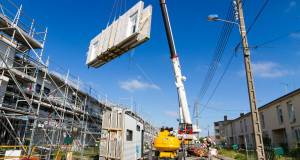- Employment
- Posted
Airtricity to create 200 jobs ahead of new marketing drive

Scottish-owned electricity supplier Airtricity has announced the creation of 200 new jobs as it embarks on a drive to win new customers.
Scottish-owned electricity supplier Airtricity has announced the creation of 200 new jobs as it embarks on a drive to win new customers.
The company, which supplies 70,000 customers in the Irish market, said it will create 50 new positions at its headquarters in Sandyford, Co Dublin, with the remaining 150 jobs being outsourced roles.
The new positions will be in sales, customer support, billing and support services.
Airtricity is launching a publicity campaign next week and is hoping to attract new customers with promises of electricity bills 13 per cent cheaper than ESB rates and the cheapest standalone rates in the country.
One of Ireland's best-known green companies, Airtricity was sold last February to Scottish and Southern Energy (SSE) in a deal worth €1.8 billion.
The combined Airtricity/SSE group has developed 40 wind farms across Europe and North America resulting in over 1,500MW of electricity, making it a leading wind-farm developer.
Kevin Greenhorn, Managing Director, Airtricity Supply, commented: “This is great news on the jobs front, this announcement reinforces that there is real potential to generate jobs in the renewable energy sector and that the industry can help the country out of its current downturn."
"Airtricity is a leader in green energy generation and supply, and in supporting jobs and economic stimulus. To date, Airtricity has invested almost €700 million into the economy, and an investment of up to €125 million is planned over the next 12 months.
“This jobs and investment announcement is fantastic news for the consumer - competition is leading to consumers getting better value from their energy supplier and at Airtricity we continue to offer the Irish consumer the most competitive stand alone electricity rates in the market - ensuring that we continue to provide both domestic and commercial consumers with electricity that is not only greener but also cheaper.”
(c) Irish Times







